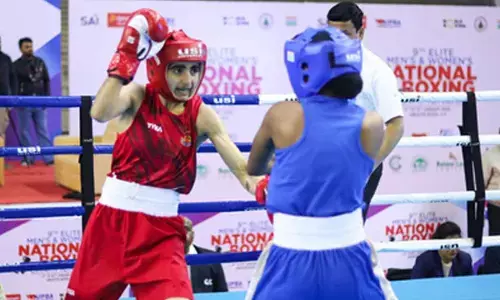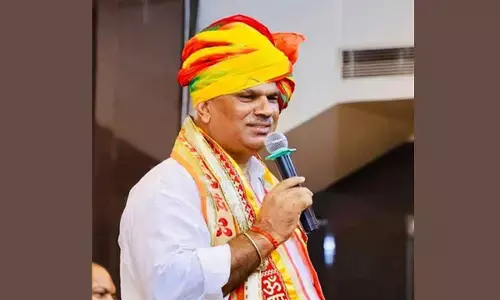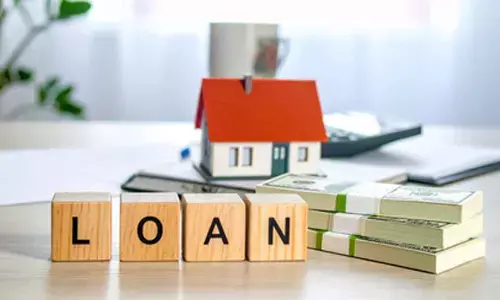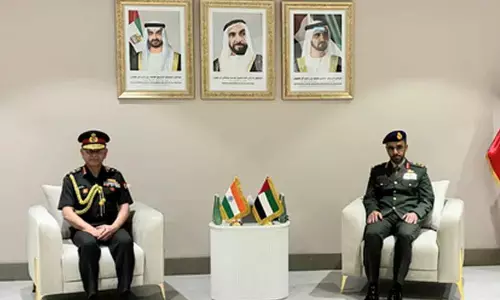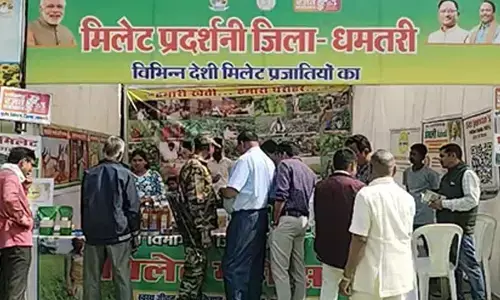Rethink the way we grow food

The world has enough food to feed people; the problem is that much of this food is going into feeding livestock or just to waste. This is what needs to be addressed
There is something fundamentally broken in the world’s agricultural system when you see images of rich European farmers and their poorer counterparts in India straddling tractors to block highways to make their anger heard. The fact is that these farmers are enjoined across continents with a serious problem of increased cost of agricultural production in an age of climate risks and losses.
In Europe, the flashpoint ironically was the introduction of the climate regulation, under which farms would be required to halve pesticide use; cut fertiliser use by 20 per cent; double organic production; and leave more land for non-agricultural use for biodiversity conservation. In addition, the Netherlands had proposed to reduce its livestock numbers to cut nitrogen pollution and Germany to slash its subsidy on diesel, a fossil fuel. All this is clearly needed in a world faced with the existential threat of climate change. Agriculture in the European Union (EU), as in other parts of the world, contributes significantly to greenhouse gas emissions — one-tenth of its annual emissions. If this cost of abatement is high for rich farmers, what will it do to farmers in our world who are at the margins of survival?
The fact is that the European farming system, which epitomises modern agriculture as we know it today, has survived because of massive subsidy. Since 1962, the EU’s Common Agricultural Policy (CAP) has provided financial support for agriculture — after much criticism, the support was brought down but only marginally. Today it constitutes some 40 per cent of the EU budget and involves direct payments to farmers. Each farmer, according to the European Commission data, received €6,700 annually (roughly Rs 50,000 / month) in 2021 as direct income support. Over and above this, there is more investment made to facilitate agriculture. Over the years, the “nature” of farming has evolved; farms have become larger and more consolidated. Small agriculturists now struggle to survive because of increased input costs, higher standards and bureaucracy. Larger farms are also faced with high debt as costs increase. The practice of organic farming — today 10 per cent of EU land is under this system — has been designed to increase the cost of cultivation. Farming has responded by becoming more intensive — more productivity per crop or livestock — and this means more use of chemicals and inputs, which combined with environmental conditions, results in even higher costs. This spiral of costs is then faced with two realities — one, the need to keep consumer prices of food under control and two, growing crop damages because of climate exigencies.
This is the system of intensive agriculture that is feted in the world — it is touted that environmental standards can be built into the system and yet farmers can increase production and make the business work. Clearly, this is not the case. The cost of food is not affordable even in countries of the western world. The environment is not protected. n India, farmers protesting on the doorstep of Delhi want higher minimum support price (MSP) for their produce. They face the same challenges as their counterparts in rich Europe, but without the massive subsidy to support food cultivation. Then they face a pincer attack — government has to procure food for distribution and so it needs to keep the price under control; consumers (all of us) do not want to be hit by food inflation. So, even as farmers struggle to make ends meet in terms of costs and increased risk because of weather and pest attacks, and every time the food price goes up and they could benefit, the option is to cool down prices through cheaper imports. They lose. They cannot then invest in the improvement of soil, water or biodiversity. In this system, the only way ahead is to discount the cost of environmental safeguards.
They are now being told that they need to increase productivity to stay profitable. But this comes at a higher cost because of expensive inputs — this food economics makes no sense as the higher costs will not be paid for in a country that needs affordable food. It is clear that the Indian government cannot subsidise individual farmers at the scale of Europe. It is also clear that even this whopping financial support would not be enough in this system of intensive agriculture.
So, we need to discuss how to reduce costs of cultivation and yet put money on the table for farmers. This is where regenerative or natural farming will play a role, but at scale and with great policy and deliberate practice and science to back it. We also need food procurement policies to work at the local level, so that farmers get assured markets for good food. The Odisha government’s millet procurement for mid-day meals is one such practice. The fact is, the world has enough food to feed people; the problem is that much of this food is going into feeding livestock or just to waste. This is what needs to be addressed.
(https://www.downtoearth.org.in/; Writer is Director General of CSE and editor of Down To Earth, an environmentalist who pushes for changes in policies, practices and mindsets)








